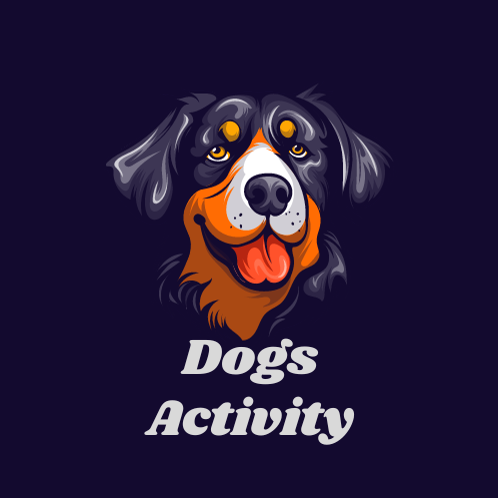
Introduction
Dogs are renowned for their loyalty and affectionate nature, making them cherished companions. However, when a dog consistently exhibits whining behavior as a means of seeking attention, it can pose challenges for pet owners. Understanding the root causes of this behavior and implementing effective strategies to address it is crucial for maintaining a harmonious relationship with your furry friend. In this comprehensive guide, we will explore the reasons behind a dog constantly whining for attention and provide practical, humane solutions to foster a balanced and content canine companion.
Why is Your Dog Constantly Whining for Attention?
Whining is a form of vocalization that dogs use to communicate various emotions and needs. When a dog repeatedly whines for attention, it may indicate an underlying issue that requires attention and understanding from the owner. Several reasons can contribute to this behavior:
- Seeking Affection and Interaction: Dogs are social animals that crave companionship and interaction with their human family members. If a dog feels neglected or lacks sufficient mental and physical stimulation, they may resort to whining as a way to seek attention and affection.
- Anxiety and Stress: Dogs may whine when they feel anxious or stressed. Changes in the household environment, such as a new pet, a move, or changes in routine, can trigger stress in dogs. Whining becomes a coping mechanism to express their discomfort and seek reassurance from their owners.
- Medical Issues: Persistent whining could be a sign of underlying medical issues causing discomfort or pain. Dogs may whine to communicate their physical distress, making it essential to rule out any health concerns through a thorough veterinary examination.
- Attention-Seeking Behavior Reinforcement: If a dog has learned that whining leads to attention or rewards, they may develop a habit of using this vocalization as a strategy to get what they want. Consistently rewarding whining unintentionally reinforces the behavior.
- Boredom and Lack of Stimulation: Dogs require mental and physical stimulation to stay happy and well-behaved. When left alone for extended periods without sufficient enrichment, a dog may whine as a way of expressing boredom and frustration.
- Loneliness: Dogs are pack animals that thrive on companionship. If a dog is left alone for extended periods, they may whine as a way to express loneliness and a desire for interaction with their human family members.
Addressing the Root Causes of Attention-Seeking Whining
To effectively address a dog’s constant whining for attention, it’s crucial to identify the root causes and tailor a solution that addresses the specific needs and circumstances of the individual dog. The following strategies can help mitigate attention-seeking whining behavior:
- Regular Exercise and Mental Stimulation: Ensure that your dog receives an adequate amount of exercise and mental stimulation daily. Engaging in activities like walks, playtime, and puzzle toys can help channel their energy positively and reduce boredom.
- Establish a Consistent Routine: Dogs thrive on routine, and a consistent schedule provides them with a sense of security. Establish a daily routine for feeding, walks, playtime, and rest, minimizing disruptions that could contribute to stress and anxiety.
- Provide Interactive Toys: Offer a variety of interactive toys that engage your dog’s mind and provide mental stimulation. Puzzle feeders and toys that dispense treats can be effective in keeping your dog entertained and occupied.
- Positive Reinforcement for Quiet Behavior: When your dog is quiet and not whining, provide positive reinforcement in the form of praise, treats, or affection. This helps shift their focus from attention-seeking behavior to desirable actions.
- Ignore Attention-Seeking Whining: If your dog is whining for attention, resist the urge to respond immediately. Ignoring the behavior teaches your dog that whining does not result in the desired attention and encourages them to explore alternative ways to communicate.
- Address Medical Concerns: If you suspect that your dog’s whining is related to discomfort or pain, consult with your veterinarian to rule out any underlying medical issues. Addressing health concerns is crucial for your dog’s overall well-being.
- Enroll in Training Classes: Basic obedience training can be beneficial in addressing attention-seeking behaviors. Enroll in positive reinforcement-based training classes to strengthen the bond between you and your dog while teaching them appropriate behavior.
- Create a Comfortable and Secure Environment: Ensure that your dog has a comfortable and secure space within the home. Provide a cozy bed, toys, and items with your scent to create a reassuring environment that reduces stress and anxiety.
- Use Calming Techniques: Explore calming techniques, such as aromatherapy, soothing music, or the use of calming pheromone diffusers, to create a relaxed atmosphere for your dog.
- Seek Professional Guidance: If attention-seeking whining persists or becomes a significant challenge, consider seeking guidance from a professional dog trainer or behaviorist. They can assess the specific dynamics of your dog’s behavior and provide tailored strategies for improvement.
Conclusion
Addressing a dog’s constant whining for attention requires patience, understanding, and a proactive approach to meet their physical and emotional needs. By identifying the root causes of the behavior and implementing positive reinforcement-based training, mental stimulation, and consistent routines, pet owners can foster a healthy and balanced relationship with their canine companions.
Remember that each dog is unique, and the effectiveness of strategies may vary. Tailor your approach based on your dog’s individual temperament, preferences, and circumstances. With time, consistency, and positive reinforcement, you can help your dog overcome attention-seeking whining and create a harmonious living environment for both you and your furry friend.



